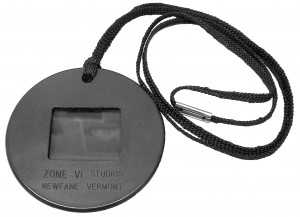Somewhere back in the stone age of photography, I took a
Fred Picker Zone VI workshop. One of the artifacts given at the beginning was this:
Zone VI B&W viewing filter... Susan and I have used a Zone VI B&W viewing filter for years. This nifty little round device not only shows you the relative tonal relationship between different areas of a scene, it also acts as a framing device.

www.jbhphoto.com
I still occasionally use mine, but it seems to have slipped into a travel bag--and I am still searching. It was a helpful tool to break me away from Kodachrome/Fujichrome/Cibachrome and the infatuation with saturated colors. Now mind you, if one remembers these technologies of the 70s and early 80s--the results were wonderous. I even invested in a CPP-2...
 But I started with mono.
But I started with mono. First Polaroid via a 125, and later with an
Argus C3 with Pan-X in Microdol 1:1... 
Those were the days.
I was taught through experience to see things as they would be rendered in BW. I learned to select developers, papers, and toners that gave me what I saw in my head. That was all nearly 60 years ago.
A well-imagined and thought-out post-process monochrome image can be the most expressive and emotional of all.
I look at Jon's image and the shadow up on the upper left evokes a mystery of whether this is a person--or merely something structural in the background. The best images keep us guessing and imagining.
Monochrome has the power to evoke that on a very deep level... 
And as long as we are about roots and beginnings, here is an excellent cover take on an ELP classic by Eduardo Arzola and a worldwide crew (props to Greg Lake, the 70s, and great B&W films with mythical papers and chemistry:

 www.jbhphoto.com
www.jbhphoto.com
 Those were the days.
Those were the days.